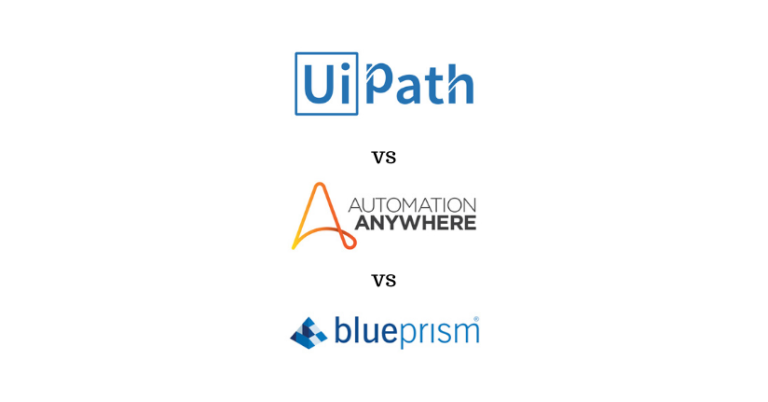Imagine reducing your operational costs by up to 40% and boosting productivity by up to 50%—all without adding more staff. Sound too good to be true? It’s not. Robotic Process Automation (RPA) is making these impressive figures a reality for businesses across the globe. By automating repetitive tasks, RPA is not only freeing up valuable time for employees but also enhancing accuracy and efficiency in ways that traditional methods simply can’t match.
In this blog, we’ll dive into how RPA is transforming business operations, explore the practical steps for successful implementation, and uncover its significant role in digital transformation. We’ll also highlight real-world use cases from various industries to show how RPA can be a game-changer for your business. If you’re curious about how automation can elevate your operations, keep reading to discover the potential of RPA.
Table of Contents
What is Robotic Process Automation (RPA)?
Robotic Process Automation (RPA) involves using software robots, or “bots,” to perform routine tasks that are typically done by humans. These tasks can include data entry, processing transactions, generating reports, and more. RPA bots can work around the clock, ensuring that tasks are completed quickly and accurately.
How RPA Transforms Business Operations
-
- Increased Efficiency: RPA automates repetitive tasks, allowing employees to focus on more complex and strategic work. This leads to increased productivity and faster turnaround times.
-
- Cost Savings: By automating routine tasks, businesses can significantly reduce labor costs. RPA bots can work continuously without breaks, holidays, or sick days.
-
- Improved Accuracy: Human errors can be costly and time-consuming to fix. RPA bots perform tasks with high accuracy, reducing the risk of errors and ensuring data consistency.
-
- Scalability: RPA systems can be easily scaled up or down to match the workload. This flexibility allows businesses to adapt quickly to changing demands.
-
- Enhanced Customer Experience: With RPA handling routine tasks, employees have more time to focus on customer service, leading to improved customer satisfaction.
Business Process Automation with RPA
Business Process Automation (BPA) involves using technology to automate complex business processes. RPA is a key component of BPA, helping businesses streamline operations and improve efficiency. Here are some common applications of RPA in business process automation:
-
- Invoice Processing:
-
- Automating the processing of invoices can save time and reduce errors. RPA bots can extract data from invoices, validate it, and enter it into accounting systems.
-
- Example: A manufacturing company automates its invoice processing, reducing processing time by 50% and eliminating manual errors.
-
- Customer Support:
-
- RPA bots can handle routine customer inquiries, freeing up customer support agents to handle more complex issues. This leads to faster response times and improved customer satisfaction.
-
- Example: An e-commerce company uses RPA to automate responses to common customer inquiries, resulting in a 30% increase in customer satisfaction.
-
- HR Processes:
-
- Automating HR tasks such as payroll processing, employee onboarding, and performance reviews can improve efficiency and accuracy. RPA bots can handle repetitive tasks, allowing HR professionals to focus on strategic initiatives.
-
- Example: A large corporation automates its payroll processing, reducing processing time from days to hours and ensuring timely and accurate payments.
-
- Data Management:
-
- RPA can automate data entry, data extraction, and data validation tasks, ensuring data consistency and accuracy. This is particularly useful in industries with large volumes of data, such as healthcare and finance.
-
- Example: A healthcare provider uses RPA to automate patient data entry, reducing errors and improving data accuracy.
The Role of Artificial Intelligence in Robotic Process Automation
Artificial intelligence (AI) enhances the capabilities of RPA by enabling bots to perform more complex tasks that require decision-making and problem-solving. AI-powered RPA can analyze large amounts of data, recognize patterns, and make informed decisions. This combination of AI and RPA is transforming business operations in several ways:
-
- Predictive Analytics:
-
- AI-powered RPA can analyze historical data to predict future trends and help businesses make data-driven decisions.
-
- Example: A retail company uses AI-powered RPA to analyze sales data and predict inventory needs, reducing stockouts and overstock situations.
-
- Natural Language Processing (NLP):
-
- With NLP, RPA bots can understand and respond to human language, making it possible to automate tasks such as customer service inquiries and data extraction from unstructured documents.
-
- Example: A bank uses NLP-powered RPA to automate customer service chatbots, providing instant and accurate responses to customer inquiries.
-
- Machine Learning:
-
- Machine learning algorithms enable RPA bots to learn from past actions and improve their performance over time.
-
- Example: An insurance company uses machine learning-powered RPA to automate claims processing, continuously improving accuracy and efficiency.
Implementing RPA in Your Business
Implementing RPA in your business involves several steps:
-
- Identify Suitable Processes:
-
- Start by identifying repetitive and time-consuming tasks that can be automated. These tasks should have clear rules and structured data.
-
- Example: A finance department identifies data entry and reconciliation tasks as suitable for RPA.
-
- Select the Right RPA Tool:
-
- Choose an RPA tool that meets your business needs. Consider factors such as ease of use, scalability, and integration capabilities.
-
- Example: A mid-sized company selects an RPA tool that integrates seamlessly with its existing software systems.
-
- Develop and Test Bots:
-
- Develop RPA bots to perform the identified tasks. Test the bots thoroughly to ensure they work correctly and meet your business requirements.
-
- Example: An IT team develops and tests RPA bots to automate data entry tasks, ensuring they operate accurately and efficiently.
-
- Deploy and Monitor:
-
- Deploy the RPA bots in your business environment. Monitor their performance regularly to identify any issues and make necessary adjustments.
-
- Example: A company deploys RPA bots to automate customer service tasks and continuously monitors their performance to ensure optimal operation.
-
- Continuous Improvement:
-
- Continuously assess and improve your RPA implementation to ensure it remains effective and meets your evolving business needs.
-
- Example: A company regularly reviews its RPA processes to identify areas for improvement and implement updates as needed.
The Impact of RPA on Digital Transformation
Digital transformation involves integrating digital technology into all areas of a business to improve operations and deliver value to customers. RPA plays a crucial role in digital transformation by automating routine tasks and enabling businesses to operate more efficiently.
-
- Streamlined Operations:
-
- RPA automates repetitive tasks, allowing businesses to streamline their operations and focus on strategic initiatives.
-
- Example: A logistics company uses RPA to automate shipment tracking and inventory management, improving efficiency and accuracy.
-
- Improved Agility:
-
- With RPA, businesses can quickly adapt to changing market conditions and customer demands.
-
- Example: A financial services firm uses RPA to automate compliance reporting, ensuring it can quickly respond to regulatory changes.
-
- Data-Driven Decisions:
-
- RPA bots can collect and analyze data, providing valuable insights that help businesses make informed decisions.
-
- Example: A retail company uses RPA to analyze customer purchase data and develop targeted marketing campaigns.
-
- Enhanced Innovation:
-
- By freeing up employees from routine tasks, RPA enables them to focus on innovation and creative problem-solving.
-
- Example: A tech company uses RPA to automate software testing, allowing developers to focus on creating new features and improving product quality.
RPA Use Cases Across Industries
RPA is being used across various industries to improve efficiency, reduce costs, and enhance customer experience. Here are some notable use cases:
-
- Healthcare:
-
- RPA is used to automate patient data entry, appointment scheduling, and claims processing. This reduces administrative workload and allows healthcare providers to focus on patient care.
-
- Example: A hospital uses RPA to automate patient registration, reducing wait times and improving the patient experience.
-
- Finance and Banking:
-
- RPA is used to automate tasks such as loan processing, fraud detection, and compliance reporting. This improves efficiency and ensures accuracy in financial transactions.
-
- Example: A bank uses RPA to automate mortgage processing, reducing the time it takes to approve loans and improving customer satisfaction.
-
- Retail:
-
- RPA is used to automate inventory management, order processing, and customer service. This helps retailers manage their operations more efficiently and respond quickly to customer needs.
-
- Example: An online retailer uses RPA to automate order fulfillment, ensuring timely delivery and reducing operational costs.
-
- Manufacturing:
-
- RPA is used to automate supply chain management, production scheduling, and quality control. This improves efficiency and ensures consistent product quality.
-
- Example: A manufacturing company uses RPA to automate inventory tracking, reducing stockouts and ensuring timely production.
-
- Telecommunications:
-
- RPA is used to automate customer service, billing, and network management. This improves service quality and reduces operational costs.
-
- Example: A telecom company uses RPA to automate customer account management, reducing response times and improving customer satisfaction.
-
- Insurance:
-
- RPA is used to automate claims processing, policy management, and customer service. This improves efficiency and ensures accurate processing of insurance claims.
-
- Example: An insurance company uses RPA to automate claims verification, reducing processing time and ensuring timely payments to policyholders.
Conclusion
Robotic Process Automation (RPA) is transforming business operations by automating repetitive tasks, improving efficiency, and reducing costs. With the integration of artificial intelligence, RPA is becoming even more powerful, enabling businesses to perform complex tasks and make data-driven decisions. Implementing RPA is a key step in digital transformation, helping businesses operate more efficiently and stay competitive in today’s fast-paced market. By leveraging RPA, companies can unlock new opportunities for growth and innovation.
In summary, RPA is not just a tool for automating tasks; it’s a strategic asset that can drive business success. Whether you’re looking to improve customer service, streamline operations, or enhance innovation, RPA offers a solution that can help you achieve your goals. As RPA continues to evolve, its impact on business operations will only grow, making it an essential component of any successful business strategy.












